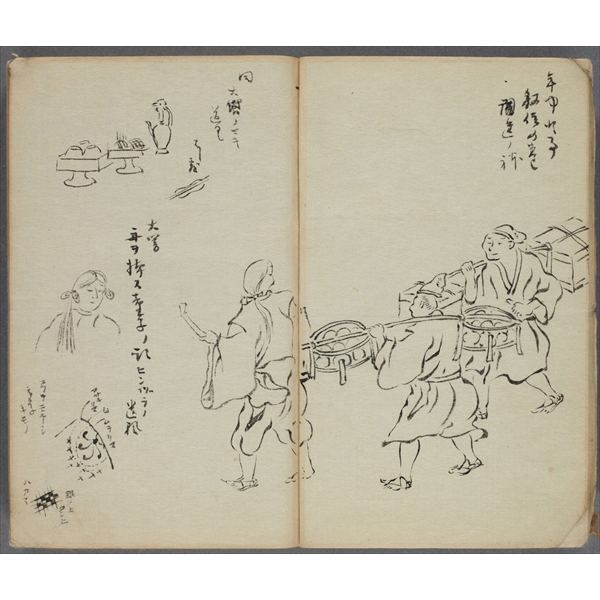
By Imaizumi Yūsaku / 1887 (Meiji 20)
Tokyo National Research Institute for Cultural Properties
Tokyo National Research Institute for Cultural Properties
This record was made when studying copies of illustrated handscrolls depicting rituals and genre scenes of the Heian period (794-1192).
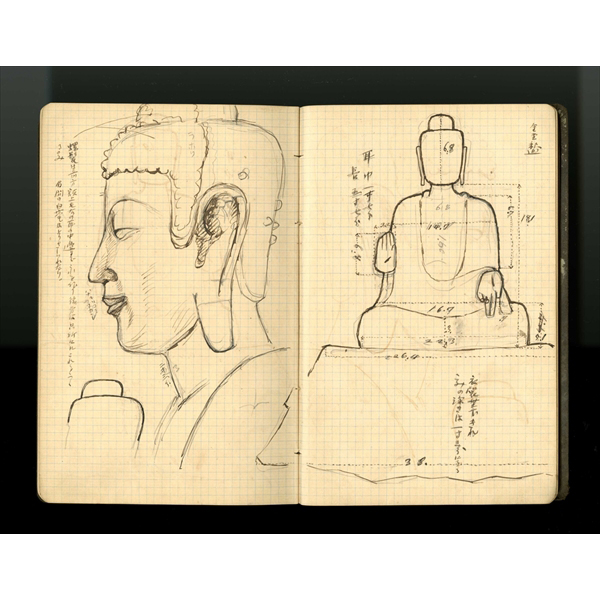
By Hirako Takurei / 1897–1907 (Meiji 30–40)
Tokyo National Research Institute for Cultural Properties
Tokyo National Research Institute for Cultural Properties
The statue’s various parts were accurately measured, and notable features in minute details were recorded.
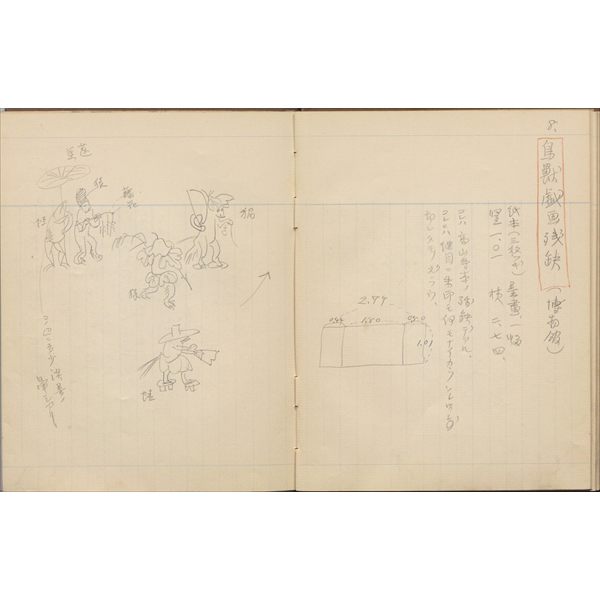
By Tanaka Ichimatsu / 1925 (Taishō 14)
Tokyo National Research Institute for Cultural Properties
Tokyo National Research Institute for Cultural Properties
This is a record detailing the research of a detached segment of the Frolicking Animals scrolls, which are in the collection of Kōsanji Temple in Kyoto. The segment, which had been part of the first volume, was studied in detail.
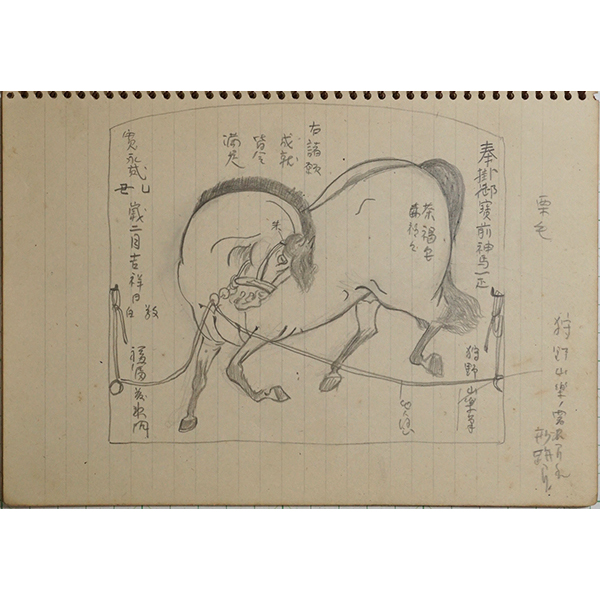
By Doi Tsugiyoshi / 1941 (Shōwa 16)
Kyoto Institute of Technology Library
Kyoto Institute of Technology Library
This is a research record of a votive tablet enshrined at Kaizuten Shrine in Shiga Prefecture. The horse depicted on the tablet is attributed to Kanō Sanraku.
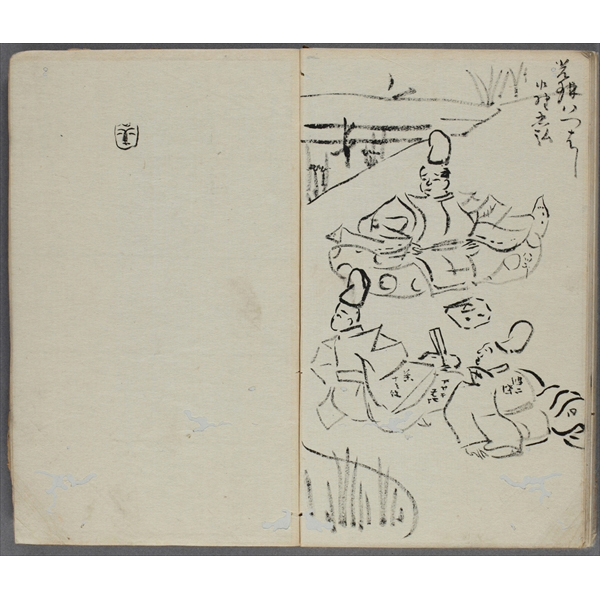
By Imaizumi Yūsaku / 1888 (Meiji 21)
Tokyo National Research Institute for Cultural Properties
Tokyo National Research Institute for Cultural Properties
This record contains information such as rough designs of the work, as well as the colors and patterns of the depicted figures’ garments.
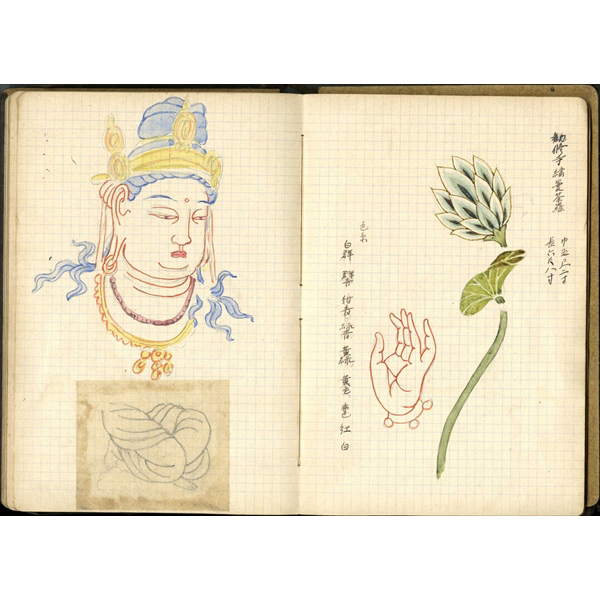
By Hirako Takurei / 1897–1907 (Meiji 30–40)
Tokyo National Research Institute for Cultural Properties
Tokyo National Research Institute for Cultural Properties
This research record concerns an embroidered image of the buddha Shaka preaching.
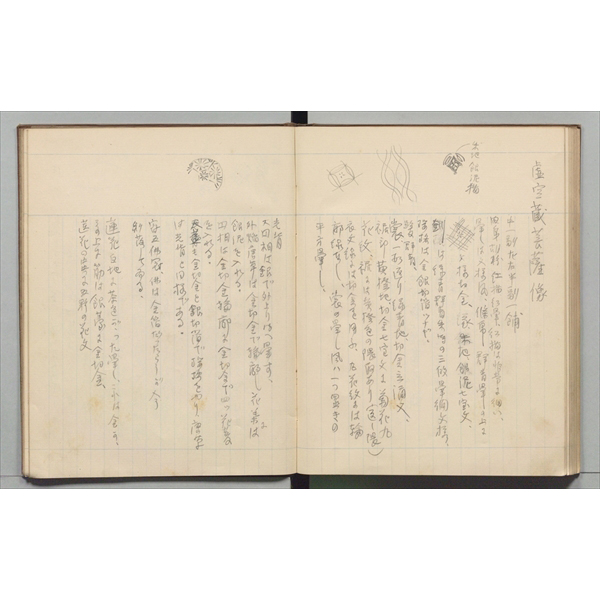
By Tanaka Ichimatsu / 1930 (Shōwa 5)
Tokyo National Research Institute for Cultural Properties
Tokyo National Research Institute for Cultural Properties
This record contains detailed descriptions of delicate patterns on the bodhisattva’s garment and the coloring technique used.
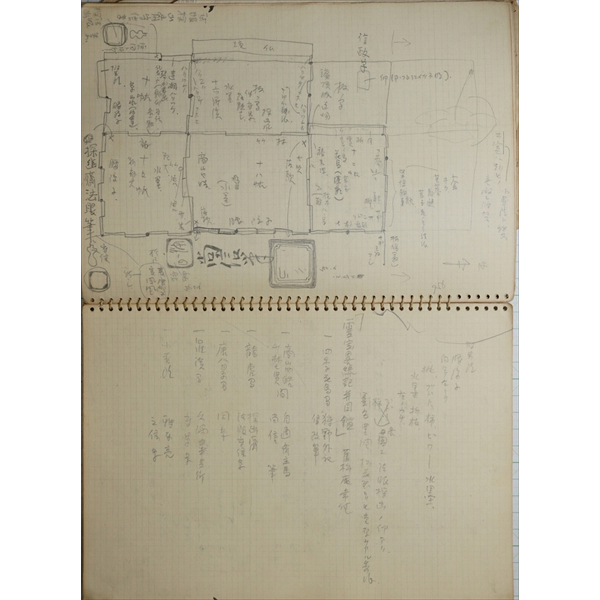
By Doi Tsugiyoshi / 1942 (Shōwa 17)
Kyoto Institute of Technology Library
Kyoto Institute of Technology Library
This is a research record of panel paintings of Shōju Raigōji Temple in Shiga Prefecture. It contains information such as the arrangement of the rooms inside the temple, title of the work, and signature.
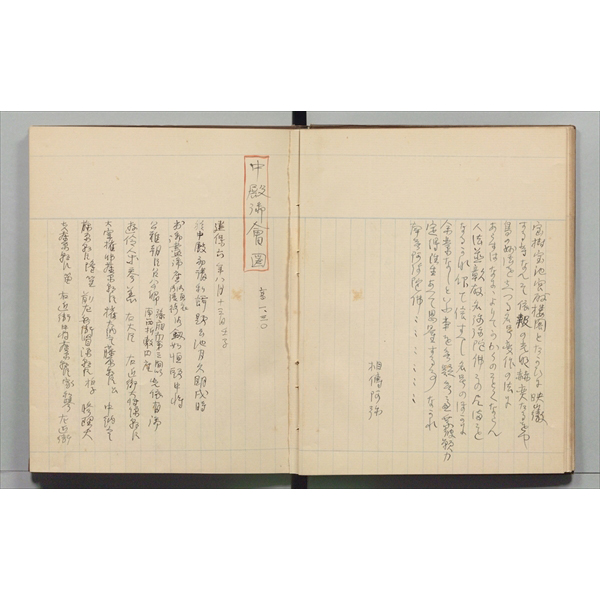
By Tanaka Ichimatsu / 1926 (Taishō 15)
Tokyo National Research Institute for Cultural Properties
Tokyo National Research Institute for Cultural Properties
This record was made when studying a copy of an illustrated handscroll. While the original work had been lost, the copy retains scenes of a poetry and music gathering held at the imperial palace during the Kamakura period (1192-1333).
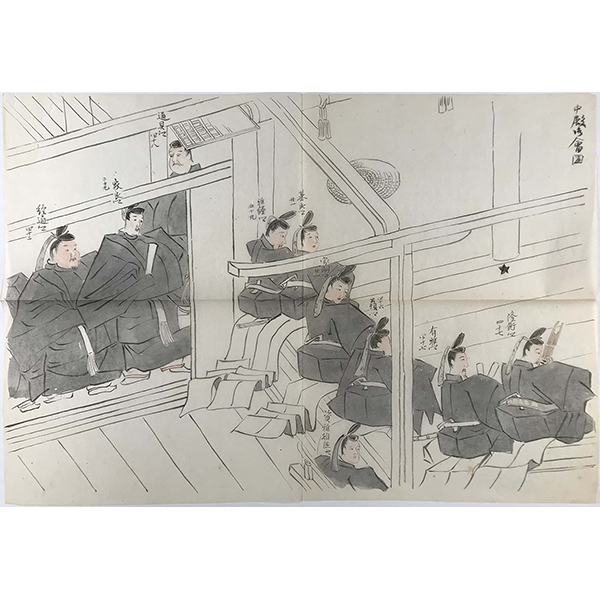
Copied by Tanaka Ichimatsu / 1926 (Taishō 15)
Tokyo National Research Institute for Cultural Properties
Tokyo National Research Institute for Cultural Properties
This copy shows some of the portraits of court nobles depicted in the illustrated handscroll named Cultural Ceremony Held at the Imperial Palace. It is carefully copied onto Japanese paper using colored paint.
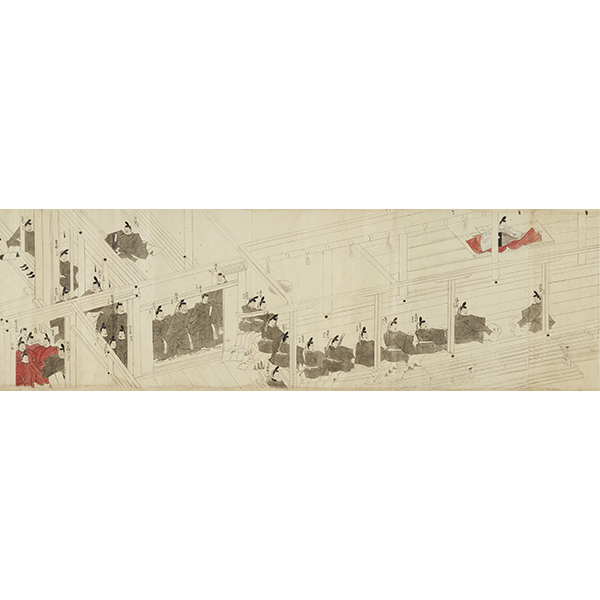
Copied by Kanō (Seisen’in) Osanobu (1796–1846) / Color on paper / Edo period, 19th century
The original of this copy was created in the Kamakura period (1192-1333), but is no longer extant. Created during the Edo period (1603-1868), this copy, together with several others, shows how the imperial hall looked and the portraits were executed at the time.
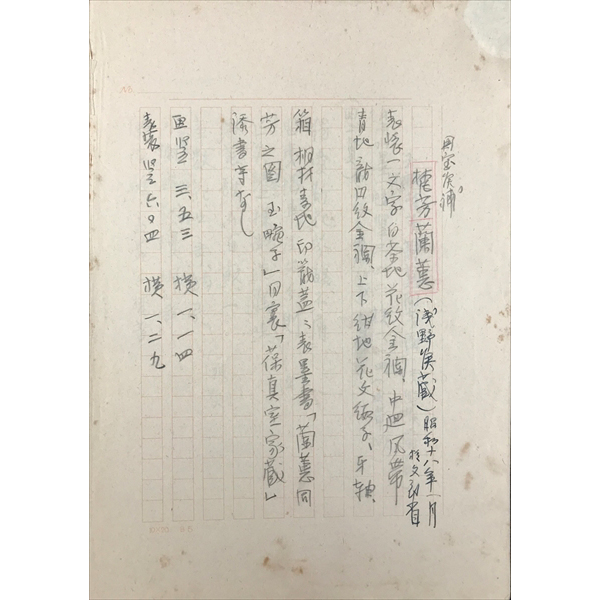
By Tanaka Ichimatsu / 1943 (Shōwa 18)
Tokyo National Research Institute for Cultural Properties
Tokyo National Research Institute for Cultural Properties
This is a record made during research to determine whether to designate an ink painting entitled Orchids as a National Treasure.
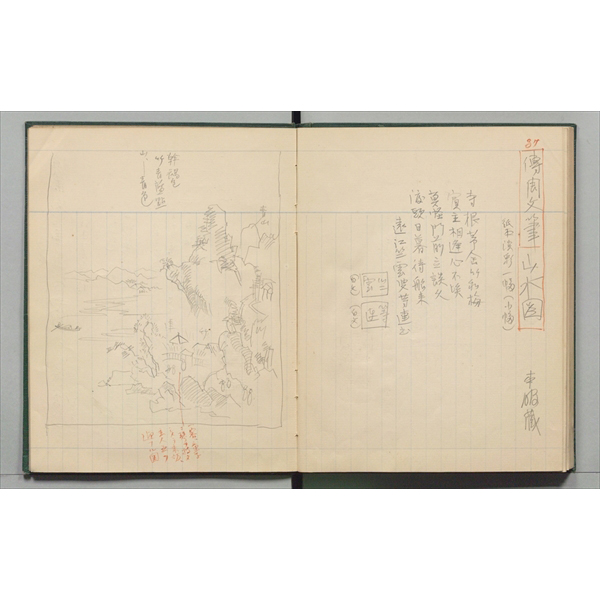
By Tanaka Ichimatsu / 1926 (Taishō 15)
Tokyo National Research Institute for Cultural Properties
Tokyo National Research Institute for Cultural Properties
In this notebook, records are taken in a way that would differentiate the studied landscape paintings from many similar examples.
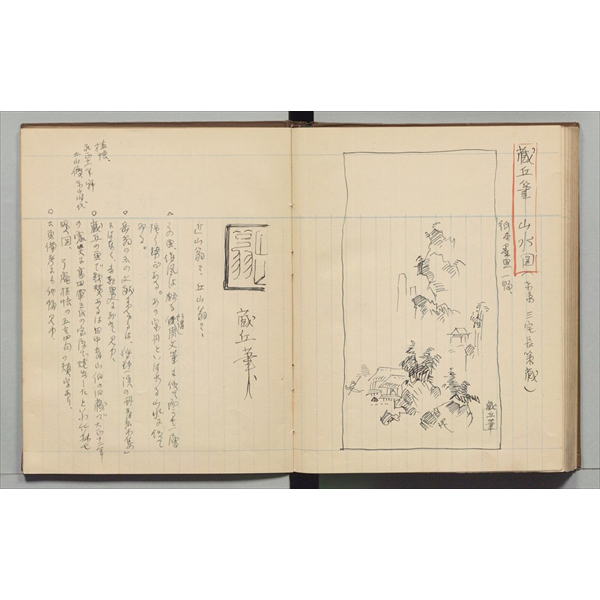
By Tanaka Ichimatsu / 1927 (Shōwa 2)
Tokyo National Research Institute for Cultural Properties
Tokyo National Research Institute for Cultural Properties
This is a research record of a landscape painting by the Zen monk-painter Gakuō Zōkyū. At the time of the research, little was known about Gakuō, who is known today as a pupil of the renowned ink painter Shūbun.
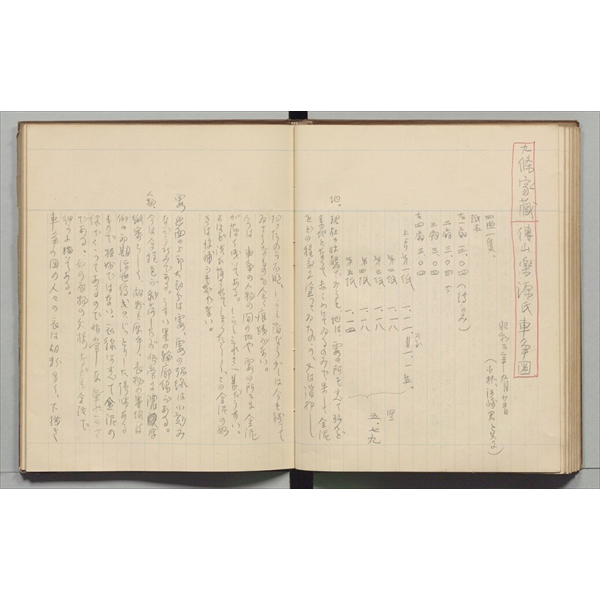
By Tanaka Ichimatsu / 1928 (Shōwa 3)
Tokyo National Research Institute for Cultural Properties
Tokyo National Research Institute for Cultural Properties
This record points out that the work, which originally had taken the form of sliding door painting, was later remounted onto a folding screen.
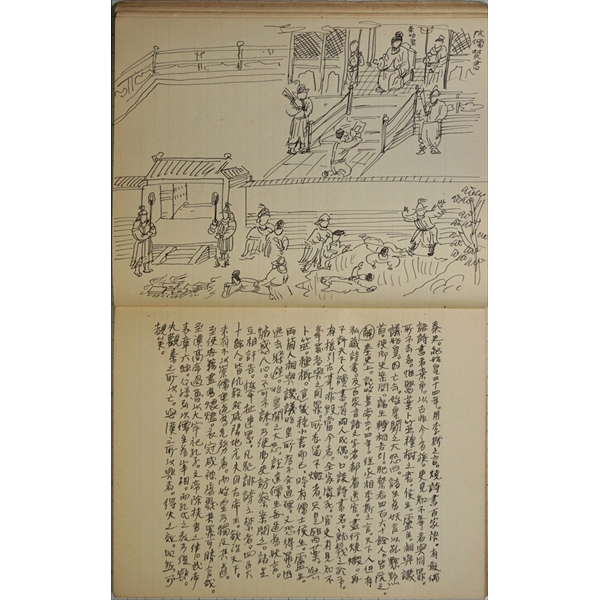
Copied by Doi Tsugiyoshi / Ca. 1933 (Shōwa 8)
Kyoto Institute of Technology Library
Kyoto Institute of Technology Library
This copy shows images from a printed book. The book was referred to by the painter Kanō Sanraku when creating the folding screen entitled Didactic Illustrations for Emperors.
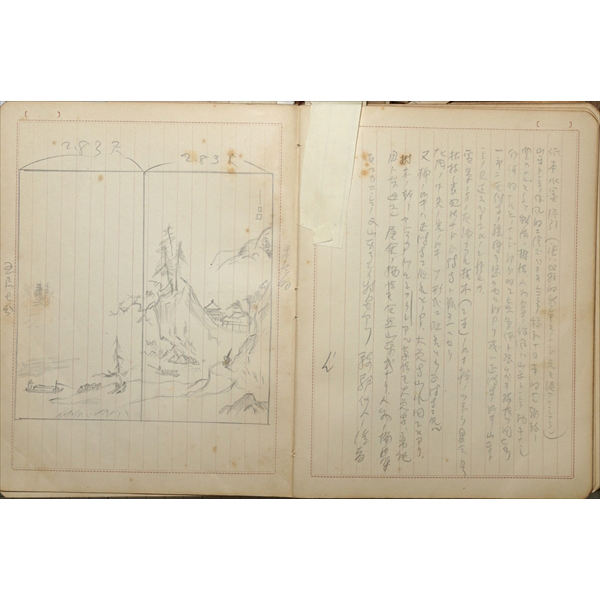
By Doi Tsugiyoshi / 1937 (Shōwa 12)
Kyoto Institute of Technology Library
Kyoto Institute of Technology Library
This is a research record of an ink landscape painting by Kanō Sanraku. Professor Doi paid attention to the way rocks and trees were depicted.
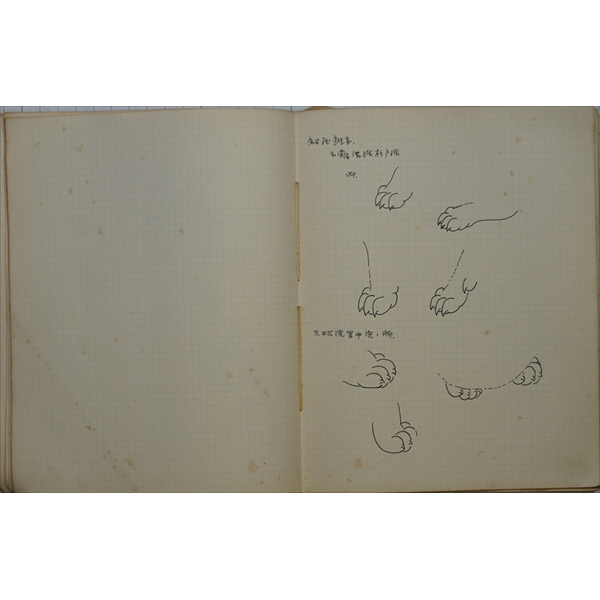
By Doi Tsugiyoshi / Ca. 1934 (Shōwa 9)
Kyoto Institute of Technology Library
Kyoto Institute of Technology Library
This record shows several tiger paws. Professor Doi believed that an artist’s distinctive style was discernible in minor details of the work.
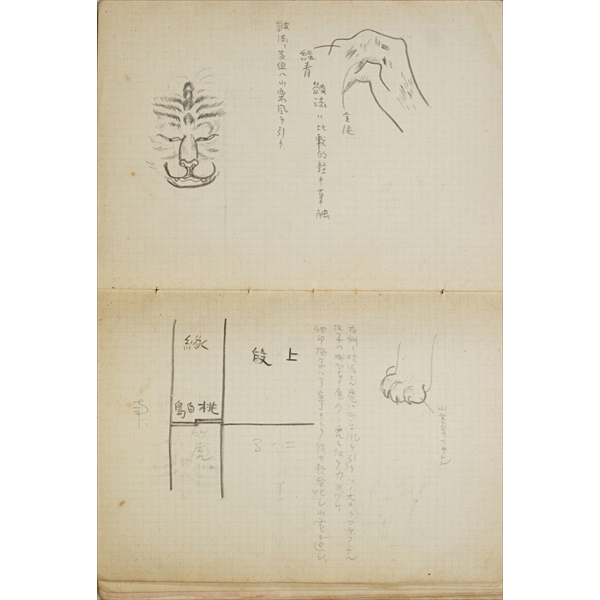
By Doi Tsugiyoshi / 1948 (Shōwa 23)
Kyoto Institute of Technology Library
Kyoto Institute of Technology Library
This record contains Professor Doi’s judgement with regard to the artist of a work without any signature. It was derived based on the analysis of the depictions of tiger paws.
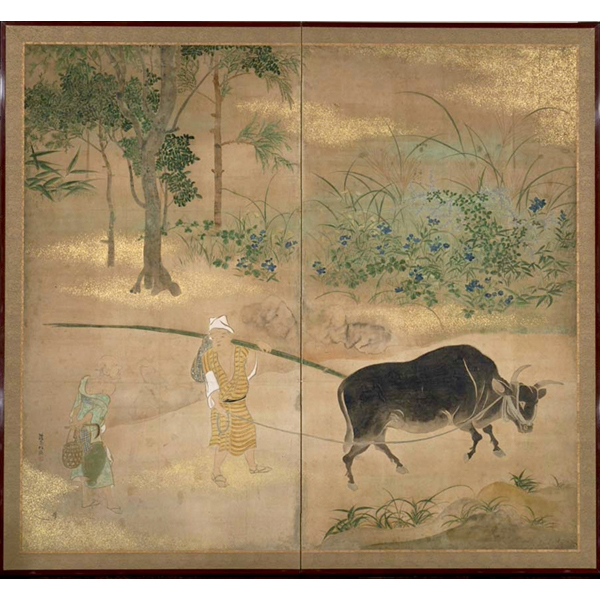
By Watanabe Shikō (1683–1755) / Color on paper / Edo period, 18th century
Two peasants are walking amid autumn grasses. The body of the ox is depicted using subtle gradations of ink.
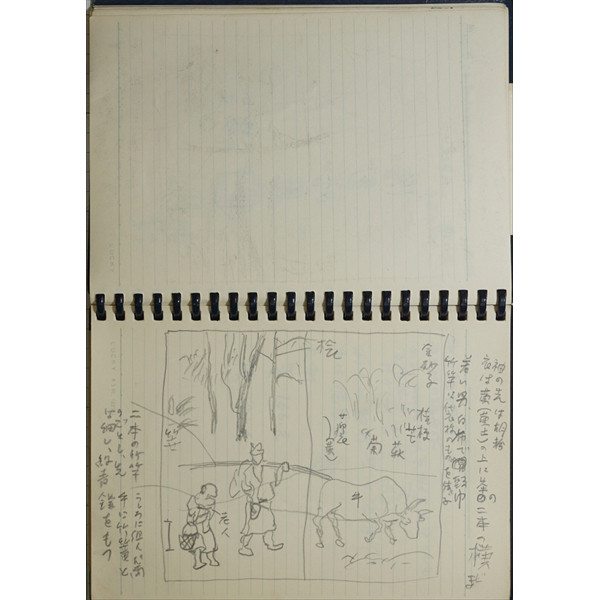
By Doi Tsugiyoshi / 1972 (Shōwa 47)
Kyoto Institute of Technology Library
Kyoto Institute of Technology Library
This record shows characteristic features of the figures depicted and their garments using both sketches and words.